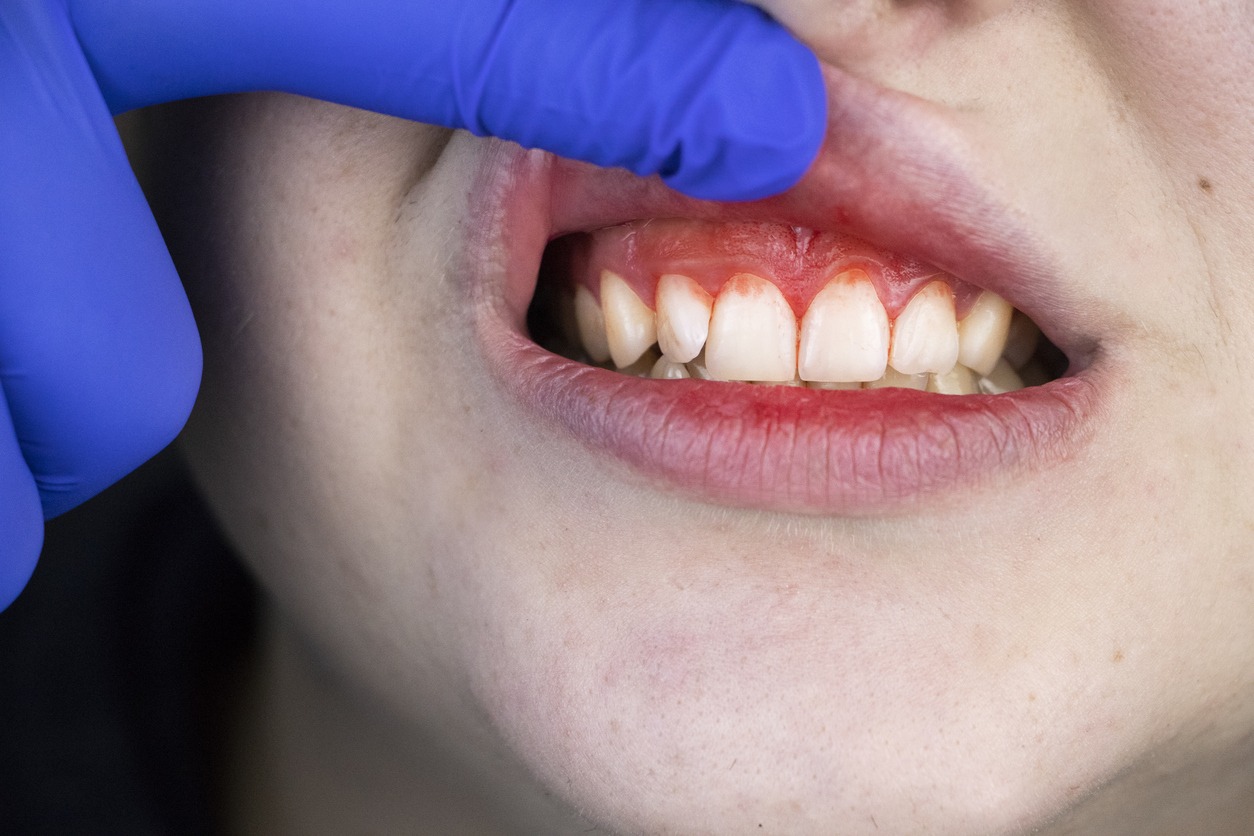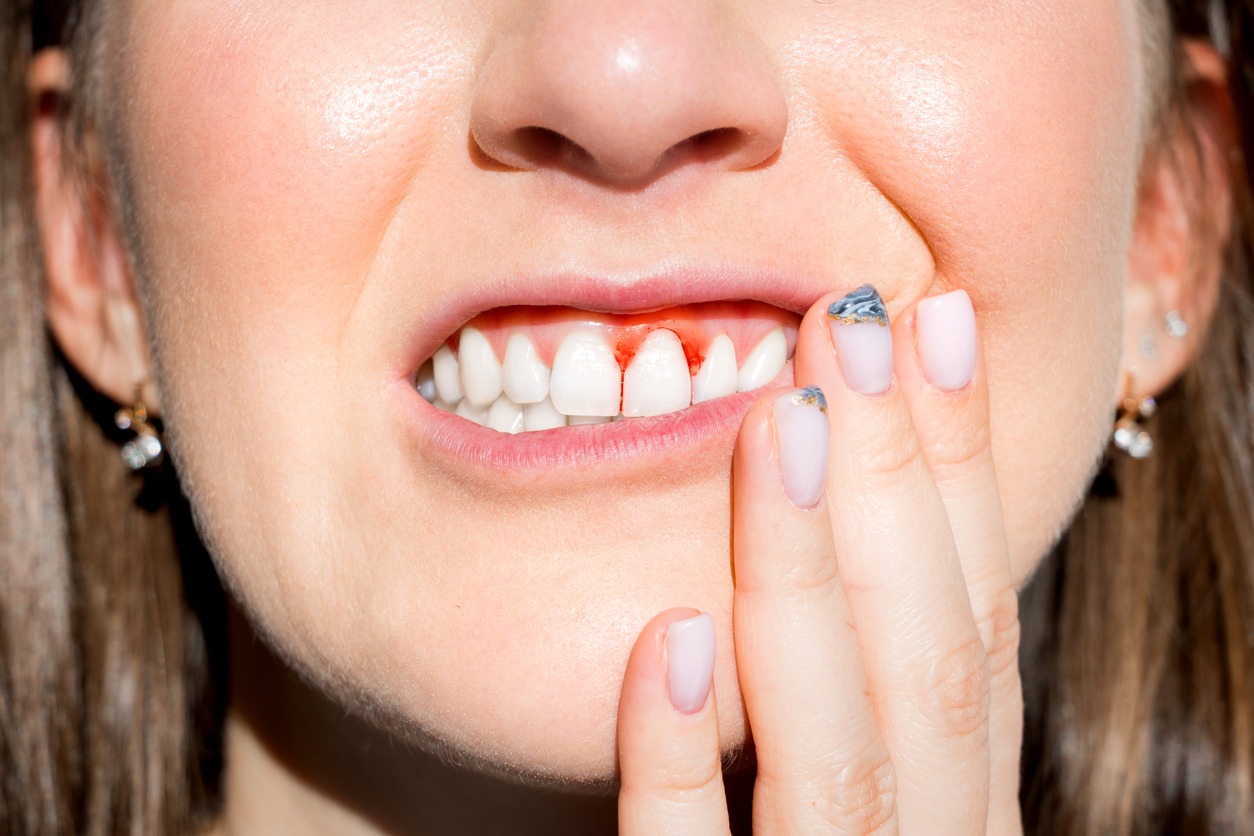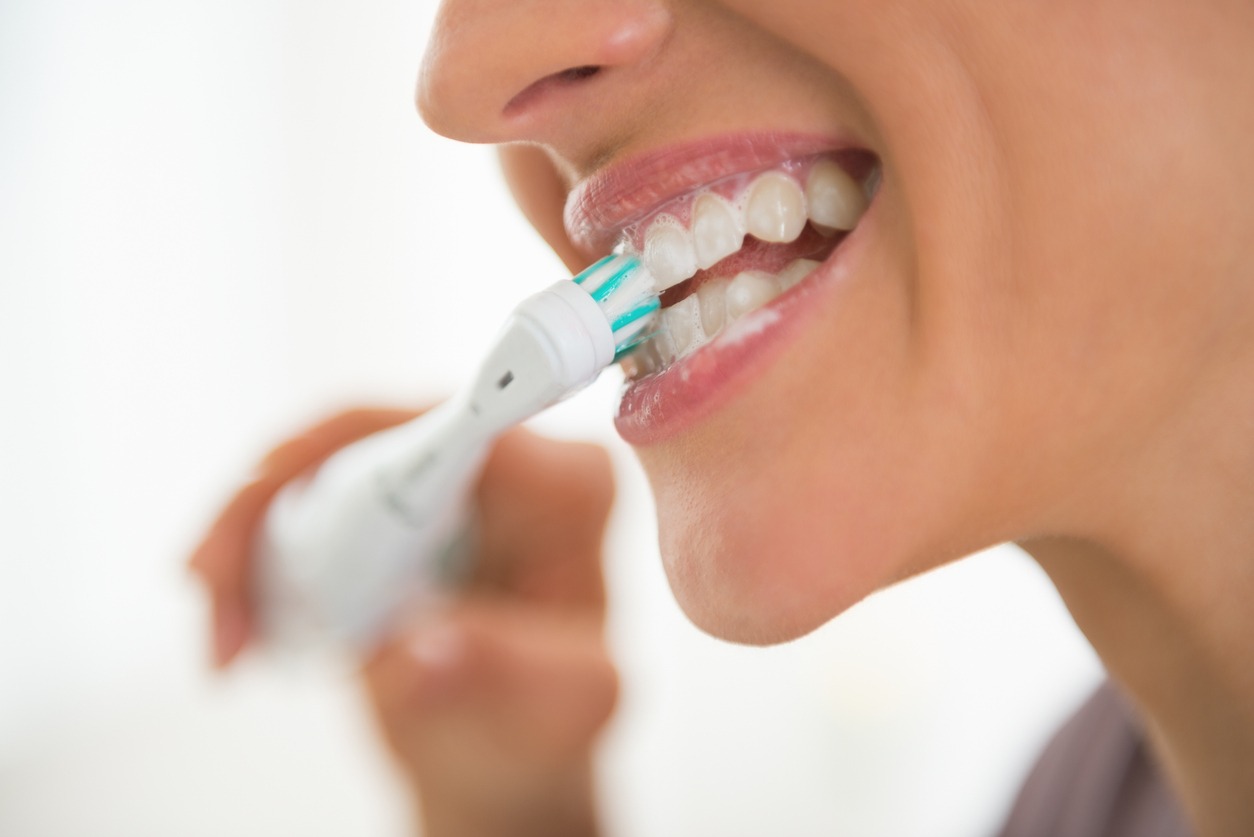Disclaimer: This article is for informational and educational purposes only and does not substitute professional medical advice. It is important to always consult a medical professional for any health issues.
Every now and then, a lot of people have inflamed gums, which is also called gingivitis. At first, it usually does not cause any major problems. However, it may spread to other parts of the periodontium or the soft tissue and bone responsible for keeping the teeth anchored firmly and cause damage there. When there is an inflammation of the periodontium, it is called periodontitis. Over time, it may lead to loosened teeth.
To prevent gingivitis and prevent or slow down the progression of the periodontitis, good oral hygiene is very important. After eating, a biofilm of debris and bacteria called dental plaque is attached to the surface of the teeth. It is important to completely remove dental plaque through brushing and flossing. If not, it will slowly calcify the minerals which are present in the saliva and become tartar, which can only be removed by your dentist.
If you have gingivitis or you suspect that you are experiencing it, we are here to help you. In this post, we are giving you more information about gingivitis, along with its treatments and prevention.
What is Gingivitis?
Gingivitis is the initial phase of gum disease or periodontal disease. It occurs when plaque, bacteria, and tartar build-up on the teeth, which causes red, swollen, and bleeding gums. [1] It is a common condition that affects most adults at some point in their life. It causes mild symptoms but may progress into a more severe condition if its root cause is not treated. [2]
The main sign of gingivitis is bleeding when you clean your teeth, and sometimes for no obvious reason too. It generally does not cause any pain or other symptoms. Therefore, it remains undetected for quite some time. In fact, even periodontitis does not cause any symptoms either until it has become severe.
The red and bleeding gums may also lead to sensitive teeth, receding gums, sore gums, and bad breath. If the gums are inflamed, they may begin to pull away from the neck of the tooth, causing gaps to form between the teeth and the gums, which are known as gum pockets. At a more advanced stage, periodontitis may cause teeth to shift position and begin to wobble or hurt when you chew. [3]
Causes of Gingivitis
The gums attach to the teeth at a lower point than the gum edges that we can see. This forms a small space referred to as the sulcus. When you eat, food and plaque can get trapped in it, which may cause a gum infection or gingivitis. [4] Gingivitis is the inflammatory response of the body to plaque and tartar on the teeth. When they remain on the teeth for long periods, the gum may become irritated, red, and swollen.
The main cause of gingivitis is the accretion of bacterial plaque around and between the teeth, as it can harden into tartar or calculus, which only dentists can remove. It may also trigger immune responses that may lead to gingival or gum tissue destruction and other complications.
Aside from that, there are also other causes and risk factors that may increase plaque formation and gum inflammation. Below are some of them:
Hormonal Changes
This may occur during puberty, the menstrual cycle, pregnancy, and menopause. When there are changes in hormones, the gums may become more sensitive, which raises the risk of inflammation.
Certain Diseases
There are some types of diseases that are linked to a higher risk of gingivitis. These include diabetes, HIV, and cancer.
Specific Medications
Drugs that reduce saliva production may impact the oral health of a person. Some examples include Dilantin, which is an epilepsy medicine, as well as angina drugs, which may cause abnormal growth of gum tissue, which increases the risk of inflammation.
Vitamin Deficiencies
Scurvy or vitamin C deficiency also has a strong link to gingivitis, as well as deficiencies in vitamin D and vitamin B12.
Smoking
Gingivitis is also very common among regular smokers. In fact, they develop gingivitis more than nonsmokers.
Age
The risk of people acquiring gingivitis increases as they age.
Family History
If your parents experienced gingivitis, it is possible for you to have a higher risk of developing it too.
Gingivitis Diagnosis
When you visit your dentist for a dental exam, your gums will be probed using a small ruler. This is a way to check for inflammation, and it measures any pockets around the teeth. In addition to that, your dentist may also require X-rays to check for any bone loss. [4]
Therefore, it is very important to consult your dentist about risk factors for gum disease and explain your symptoms. This way, your dentist will be able to diagnose if you have gingivitis. If ever gingivitis is present, you may be referred to a periodontist, who is also a dentist that specializes in the treatment of gum diseases. [4]
Treatments for Gingivitis
In order to treat gingivitis, practicing good oral hygiene is important. Some of the treatments that dentists may recommend to treat gingivitis include deep cleaning your teeth, taking antibiotic medications, and surgery. Read on below to learn more about these:
Dental Cleaning
There are various ways to deep clean the teeth without surgery. Your dentist will remove all the plaque and tartar on your teeth to prevent gum irritation. One of the ways to do this is through scaling. Teeth scaling is done to remove tartar from above and below the gum line.
Aside from that, another way is through root planing. This method smooths rough spots and eliminates plaque and tartar from the root surface. Dentists also have the option to use lasers to clean the teeth of their patients. This type of treatment helps remove tartar with less pain and bleeding compared to root planing and scaling.
Medications
There are a number of medications that can be prescribed by your dentists to treat gum disease or gingivitis. Below are some of them:
Antiseptic Mouthwash: This type of mouthwash contains chlorhexidine, and it is used to disinfect the mouth.
Timed-Release Antiseptic Chips: These are chips inserted into the pockets of the gums after root planing. They also contain chlorhexidine.
Antibiotic Microspheres: These are made with minocycline and can be inserted into the gum pockets after planing and scaling.
Oral Antibiotics: Your dentist may also prescribe you oral antibiotics that can be used to treat persistent parts of gum inflammation.
Doxycycline: This is a type of antibiotic that can help enzymes from causing tooth damage.
Surgery
If you have severe gingivitis, particularly if it is caused by any gum or bone tissue loss, surgery might be recommended by your dentist. There are also various types of surgery performed by a periodontist depending on various cases. Below are some of them: [4]
Flap Surgery: This type of surgery lifts back the gums while plaque and tartar are removed from deeper pockets. The gums are then stitched in place to fit snugly around the tooth.
Bone and Tissue Grafts: Grafting can be done if the teeth and jaw are too damaged to heal. A gum graft surgery uses tissue from the roof of the mouth to cover the exposed root of the tooth. This also helps prevent additional gum and bone loss. Bone graft surgery, on the other hand, starts with a procedure similar to flap surgery. However, they will place in a bone graft to encourage the body to regenerate any lost jaw bone.
Dental Crown Lengthening: Some people who have gingivitis may also have excess gum tissue. If this is the case, a periodontist reshapes the gum and bone tissue to expose more of the teeth. This may also be needed before specific cosmetic or restorative procedures on the teeth.
Unlike other stages of gum disease, gingivitis can be treated and cured as long as you treat it early enough. Therefore, if you notice any symptoms of gingivitis, it is important to schedule an appointment with a dentist immediately and start practicing better oral hygiene at home. Keep in mind that untreated gingivitis may worsen and turn into periodontitis, which may result in a domino effect of oral health issues. [1]
How to Prevent Gingivitis
The gums can be inflamed within just a few days if plaque is not removed, and it may harden and develop into tartar. Even though plaque forms fast, it can be easily removed by cleaning your teeth thoroughly and regularly. Brushing your teeth twice a day, as well as using an interdental brush or dental floss, helps in removing plaque effectively. [3] However, if tartar or calculus has developed on your teeth, it is important to visit a dentist immediately to have your teeth cleaned professionally and prevent gingivitis.
In addition to that, you can also reduce your risk for gingivitis by not smoking or using other tobacco products, limiting food and drinks that contain alcohol and excess sugar, and regularly visiting your dentist for checkups and cleaning. [1]
Conclusion
Gingivitis is among the many oral health issues that you should not ignore, as it may become worse in time. The good news is that early treatments may help reverse gingivitis. However, if you leave the condition untreated, it may progress into advanced gum disease that is difficult to treat and cure. Therefore, detecting and treating the condition early may help you save a lot of time and money.
Remember that everyone’s mouth is full of bacteria. Therefore, good oral hygiene is very important to stop bacteria from causing gingivitis, which is the first stage of gum disease. If you detect and treat gingivitis early, you will be able to avoid permanent and serious damage to your teeth and gums. With this, make it a habit to see a dentist regularly, at least once or twice a year, for cleanings and checkups and not just when you have dental issues. We hope this post helped you learn more about the treatments and prevention of gingivitis.
References
[1] Cleveland Clinic. (2023, January 23). Gingivitis: Symptoms and how to treat it. Cleveland Clinic. Retrieved March 10, 2023, from https://my.clevelandclinic.org/health/diseases/10950-gingivitis-and-periodontal-disease-gum-disease
[2] Newman, T. (23AD, February 6). Gingivitis. Medical News Today. Retrieved March 10, 2023, from https://www.medicalnewstoday.com/articles/241721
[3] National Library of Medicine. (2020, February 27). Gingivitis and periodontitis: Overview – NCBI Bookshelf. Retrieved March 10, 2023, from https://www.ncbi.nlm.nih.gov/books/NBK279593/
[4] Hersh, E. (2019, November 1). Gum disease (gingivitis and periodontitis). Healthline. Retrieved March 10, 2023, from https://www.healthline.com/health/gingivitis





